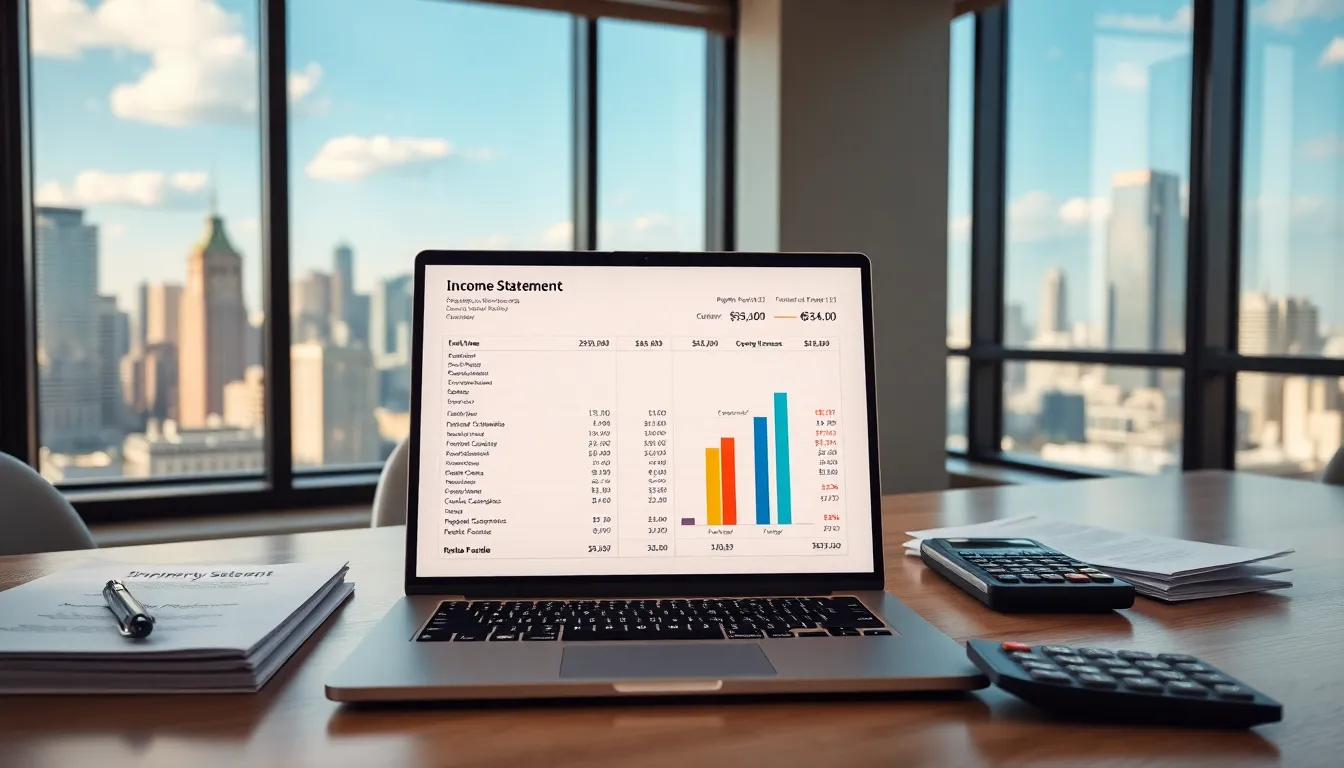Creating a successful rental property isn’t just about finding the right tenants. It’s also about understanding the numbers, yes, those pesky figures that seem determined to ruin your fun. Enter the income statement, your new best friend in the world of real estate investing. In this text, we’ll demystify the income statement for rental property and ensure you’re equipped to maximize your investments. Get ready to jump into the exciting, thrilling, and surprisingly fun world of numbers that fuel your rental empire.
Table of Contents
ToggleUnderstanding The Income Statement

An income statement for rental properties serves as a financial summary of a property’s income and expenses over a specific period, typically a year. Think of it as a report card for your rental investment, showing how well it performed over time. This report highlights revenues and costs, providing you with a clear picture of your property’s profitability and paving the way for informed financial decisions.
An income statement isn’t just numbers on a page. It reflects the intricacies of managing rental properties, encompassing everything from the rent roll to the mortgage payments. By consistently reviewing this statement, property owners can track financial performance and strategize for improvements or changes in management.
Key Components of An Income Statement
To craft a compelling income statement, it’s essential to break it down into its key components:
Calculating Rental Income
Rental income is the lifeblood of your rental property. It’s the total rent collected from tenants during the reporting period. But, don’t forget to account for potential vacancies or rent concessions that might lower your overall income. Understanding the full scope of rental income helps investors anticipate cash flow and overall property performance.
Besides, any additional income streams, like parking fees, laundry services, or pet fees, should also be included to paint a complete financial picture.
Estimating Operating Expenses
Operating expenses are the costs associated with running and maintaining the property. These can vary widely, but they typically include utilities, maintenance, property management fees, and insurance. By estimating these expenses accurately, property owners can determine how much money is left after expenses are deducted from the rental income. It is crucial to keep a running tally of these figures to ensure accurate calculations.
Analyzing Net Operating Income
Once you have a solid grasp of rental income and operating expenses, the next step is to calculate the Net Operating Income (NOI). NOI represents the total income after deducting operating expenses from rental income, excluding capital expenditures and taxes.
This figure is vital for potential investors as it helps assess the property’s profitability. To calculate NOI, one would simply use the formula:
NOI = Gross Rental Income – Operating Expenses
A high NOI indicates a well-performing rental property, while a low NOI may signal the need for expense reduction or increased rental income. Eventually, analyzing NOI can guide investment decisions and future property management strategies.
The Importance of Depreciation
Depreciation often gets a bad rap, but it’s an invaluable part of your income statement. By understanding depreciation, property owners can take advantage of tax deductions that reduce taxable income and enhance cash flow. The IRS allows landlords to depreciate their property over a set period, generally 27.5 years for residential real estate.
Incorporating depreciation into your income statement not only provides a more accurate reflection of actual profits, but it also opens up potential tax advantages. Landlords should familiarize themselves with the depreciation guidelines relevant to their specific property types and structures.
How to Create An Income Statement for Your Rental Property
Crafting an income statement doesn’t have to be a Herculean task. Follow these streamlined steps to create your very own:
- Gather Relevant Data: Start by collecting all the necessary financial data, including rent amounts, operating expenses, and other income sources.
- Use a Standard Format: To ensure clarity, use a standard income statement template, breaking down income and expenses in separate categories.
- Perform Calculations: Subtract total expenses from total income to determine your NOI.
- Review Regularly: Make it a habit to review and update your income statement quarterly or annually, ensuring you’re continually tracking the financial health of your rental property.
Common Mistakes to Avoid
While crafting income statements, landlords must be vigilant to avoid common pitfalls. Failing to account for all operating expenses or underestimating potential vacancies can skew the financial outlook. Consistent record-keeping and thorough planning are essential for creating an accurate income statement.
Tips for Accurate Income Statement Reporting
Accurate income statement reporting is crucial for successful property management. Here are some tips to ensure precision:
- Keep Detailed Records: Regularly track all income and expenses to avoid missing crucial figures. Consider utilizing property management software for enhanced efficiency.
- Consult with a Professional: For those new to rental properties, consulting with a financial advisor or accountant can provide invaluable insights and ensure accuracy.
- Stay Updated on Market Trends: Keep an eye on local rental market trends that might affect income levels, ensuring the income statement reflects the current economic climate.
- Reassess Annually: Each year, reassess your rental income and trends to adjust for inflation, maintenance needs, and other elements affecting profitability.



